How much does wood flooring cost? Options for every budget
Wood flooring costs vary hugely depending on species, styles and supplier. Here, we explain the prices you can expect to be faced with and how to control costs
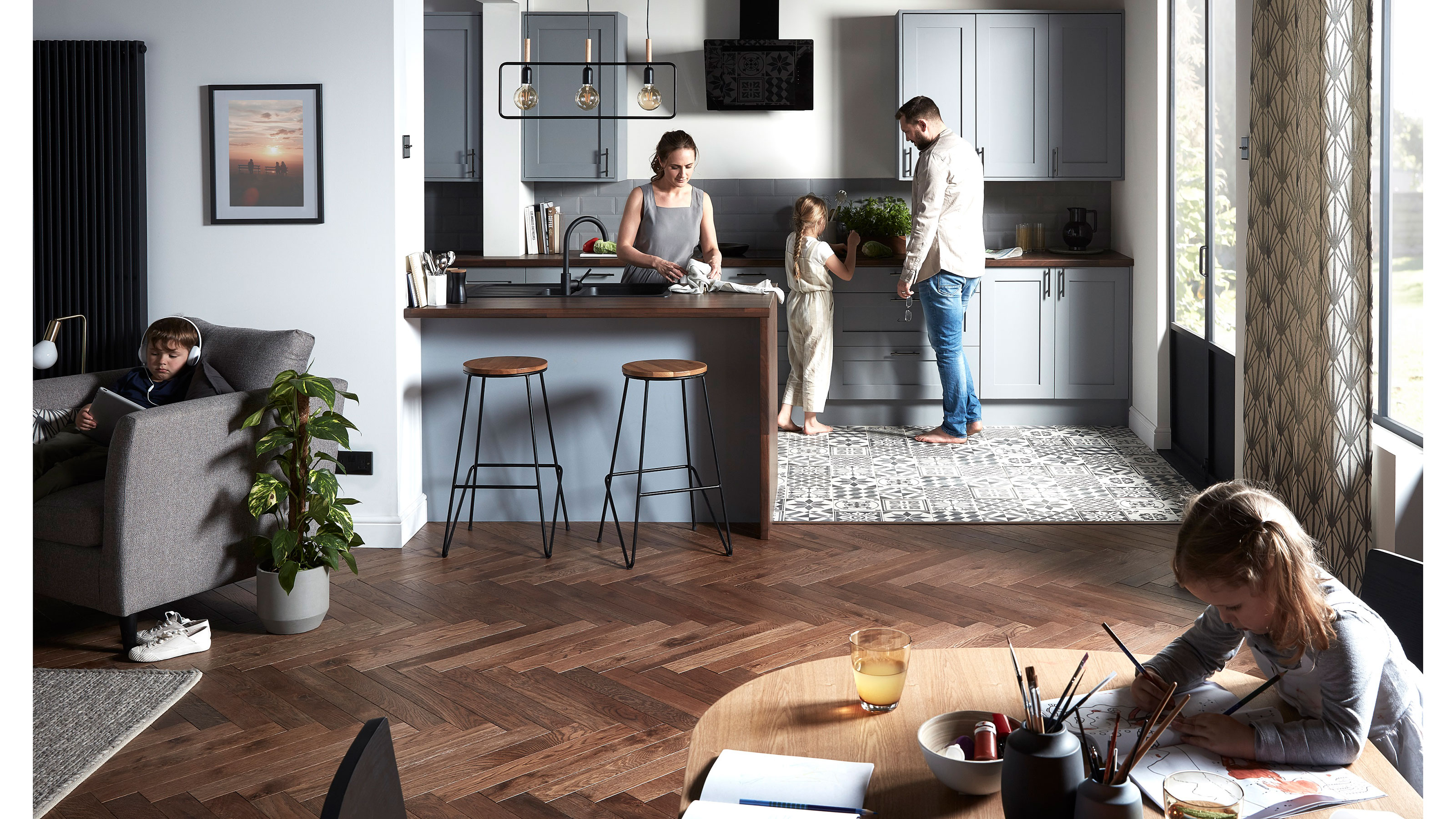
Been wondering about wood flooring costs? Wonder no more — our guide is here to explain all. We've been chatting to experts in the field to ensure you know exactly what to expect when purchasing new wooden floors, whether you are after something rustic and textured or sleek and modern.
There are many different types of wood flooring and not only does each come with its own set of pros and cons and distinct characteristics, but they also vary wildly when it comes to the price tags they carry.
Thankfully, such is the breadth of choice when it comes to wooden flooring, there really is something to suit all budgets, plus this is often a floor covering that can be laid on a DIY basis meaning those looking to cut costs even further can do so by rolling up their sleeves and getting stuck in.
In this guide, we take a look at wood flooring costs from low to high and everything in between so that you can be sure the look you love is within your reach. We also suggest some lower cost alternatives to wood floors that are practical as well as thrifty.
How much will your wood flooring cost?
In this guide, we'll be looking at the costs involved not only with bringing you wood flooring ideas to life, but also those often overlooked extras, such as installation and underlay.
We'll also take a look at the prices you might be quoted to restore an old wooden floor should you be lucky enough to be renovating property with original timber flooring.
Your choice of wood flooring will play a huge role in defining the overall look of your interior spaces and as such you need to be completely happy with your choice before making your final decision. While appearance is likely to be one of the main influences behind your choice, so too will costs.
So, just what are the factors that will influence how much you will pay for wood flooring? It is worth bearing in mind that choosing solid boards over engineered tends to be a little more expensive. Likewise, opting for a hardwood over a softwood will also push up prices. If you have your heart set on a restored antique hardwood, get ready for costs to skyrocket, but if you are happy with a look-a-like wood floor, made from something like laminate or vinyl, you may well find you have some money left over.
Here, we take a look at each type of wood flooring separately to give you a clearer idea of what to expect.
How much does solid wood flooring cost?
Solid wood flooring, made from one solid piece of wood as opposed to thinner layers of timber as with engineered flooring, comes in many different forms, from boards with tongue-and-groove edges to allow them to easily fit together, to those that are designed to be nailed down into floor joists.
Solid flooring comes in all kinds of thicknesses and materials — with thicker boards being the best option. It is also possible to choose from finished, unfinished, stained, waxed, oiled or lacquered boards.
Solid wood flooring does tend to cost more than engineered, but only marginally and this will very much depend on the material and style you are opting for. It is useful to bear in mind that many people see the extra costs as worth it when it comes to longevity and appearance — solid wood can be sanded and refinished many times more than engineered.
That said, it may not be the best flooring for kitchens — engineered timber tends to be more structurally stable when exposed to humid and moist conditions.
“Investing in solid wood flooring may seem like a large expense initially," says Craig Smith, Merchandising Manager at Flooring Superstore. "However, solid wood flooring is also renowned for adding to the value to a property and, thanks to its robust nature, is built to withstand the test of time."
Expect to pay between approx. £35/m² - £120/m².
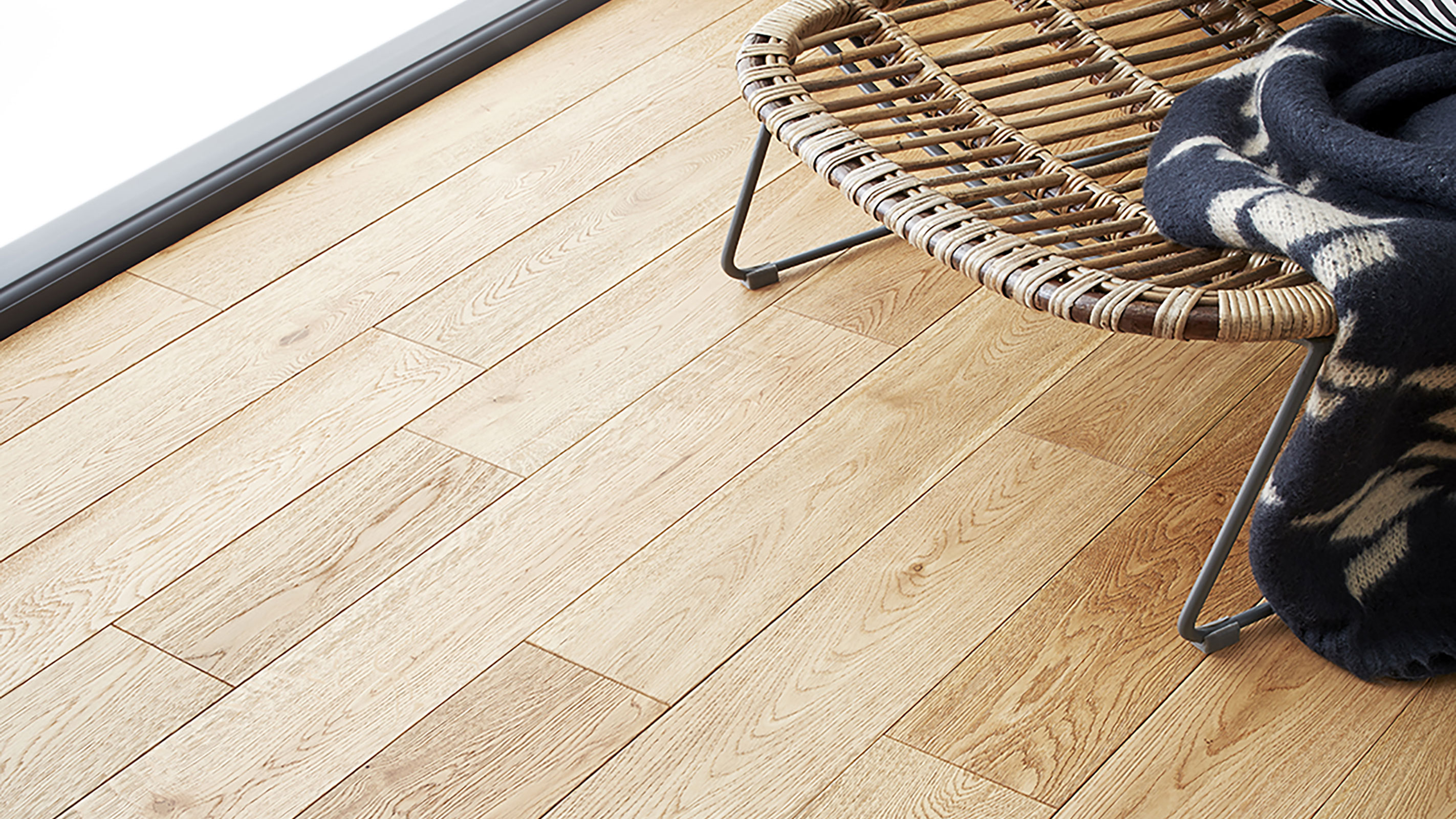
What does engineered wood flooring cost?
Engineered wood flooring is really popular — attractive, available in a massive range of wood species and easy to lay on a DIY basis.
Engineered wood flooring is comprised of layers — a top layer of solid hardwood that is glued to several thinner layers of plywood or recycled wood.
“Engineered wood features a solid wood veneer — so looks like the real thing," explains Craig Smith. "However, the base is made up of cross-ply layers glued on top of each other which reflects in a much cheaper price point."
Quality (and cost) is often dependent on the thickness of the top layer — the thicker the better. Obviously the type of wood you opt for will have an effect on costs too. It is also worth bearing in mind that finishes such as 'brushed and oiled' will often be more pricey than simple lacquered or unfinished. Herringbone or parquet engineered flooring also costs more — expect to pay between £10-£40 more per m2.
Although it is a little cheaper than solid wood flooring, there are actually many advantages to be enjoyed by selecting this option.
"It boats additional benefits such as better stability and resistance to variations in temperature and moisture — engineered wood out-performs solid in terms of versatility and room suitability and is often considered better value for money," says Craig.
Prices really do vary but tend to start from around £35/m², rising to beyond £100/m².
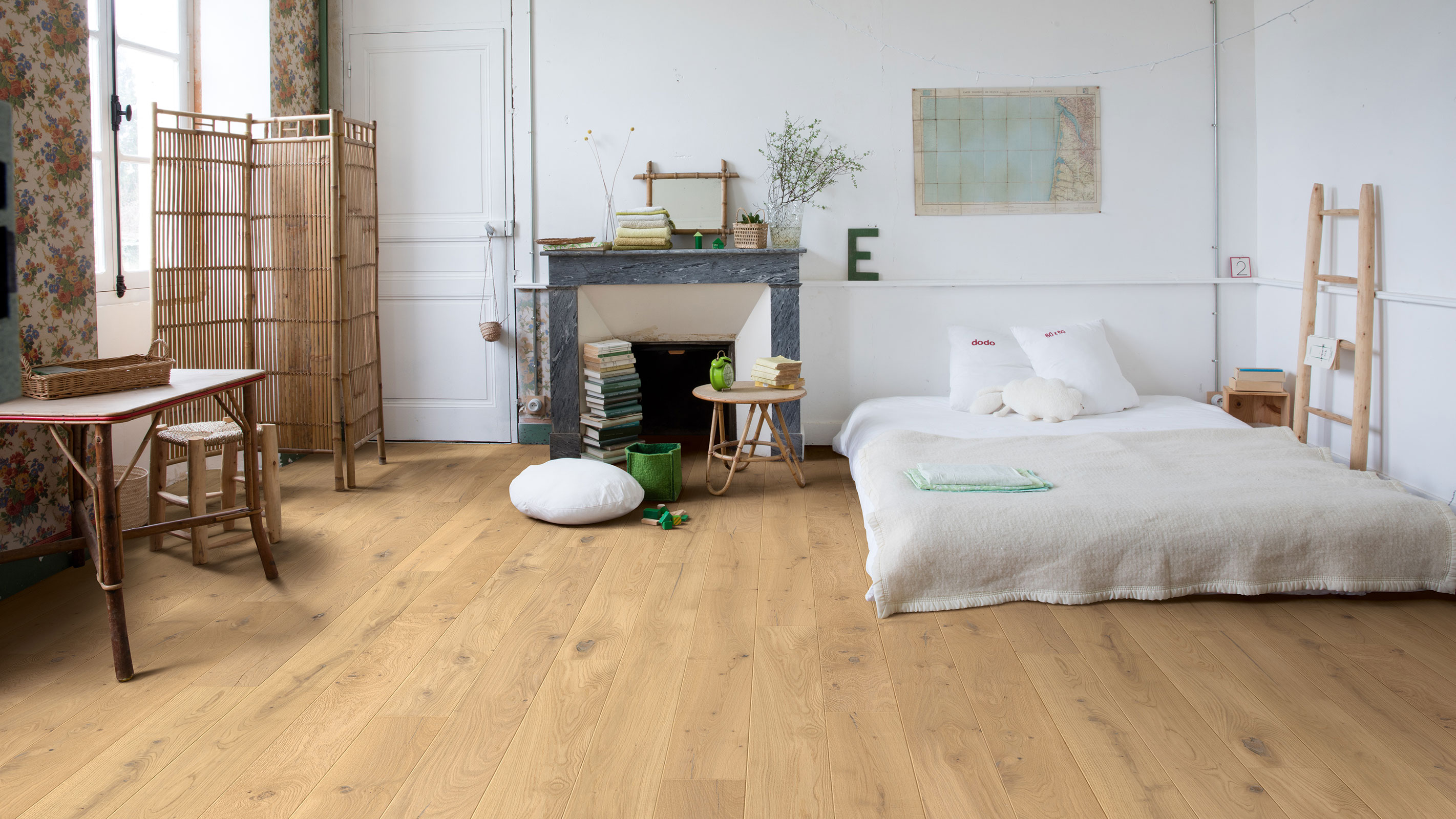
Does hardwood flooring cost much more than softwood?
Hardwood flooring is more expensive (in the majority of cases) than softwood — but it is also durable, hardwearing and low maintenance.
Hardwoods comes from deciduous trees (the trees that lose their leaves seasonally). Hardwoods commonly used for flooring include oak, walnut, mahogany and teak.
Softwoods come from evergreen trees. Pine and fir are amongst the most commonly used softwoods for flooring. Softwoods can be a great, lower cost option in rooms that don't see much footfall – for example bedrooms – as they are more prone to damage from heels or sharp objects.
To give you a rough idea, GoodHome Lulea Natural Oak Solid wood flooring from B&Q costs £45/m2 compared to their GoodHome Granna Natural Pine Solid wood flooring which costs £30/m2.
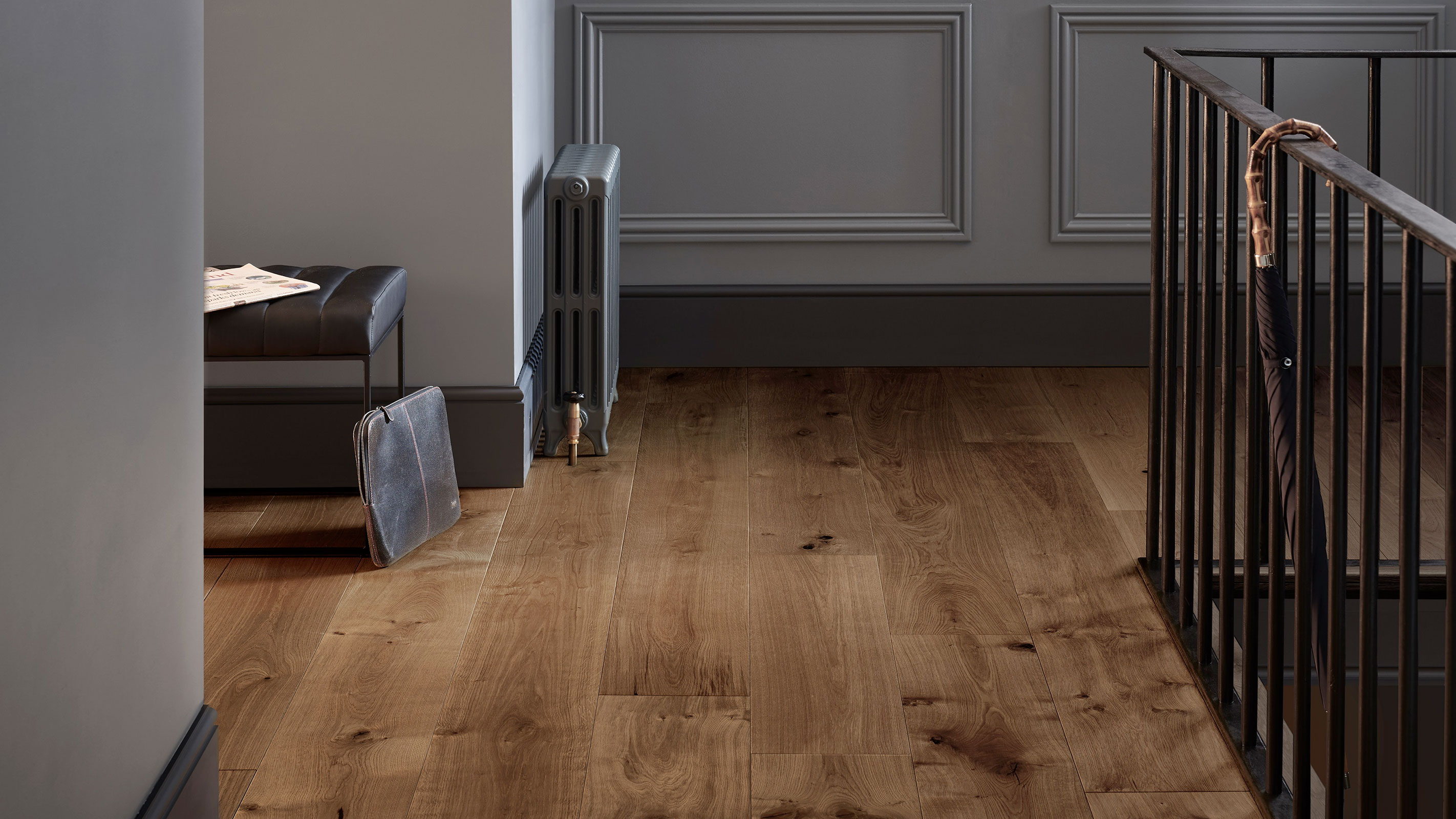
Is parquet flooring expensive?
Hardwood parquet flooring is one of the most expensive options, costing from £75/m2.
That said, in recent years it has become extremely popular once more. Comprised of small blocks of solid timber, laid in a pattern, authentic parquet flooring is pretty complicated to fit on a DIY basis.
Many people now choose to use engineered wood flooring in a herringbone pattern as an alternative, or a material such as vinyl, to replicate the look.
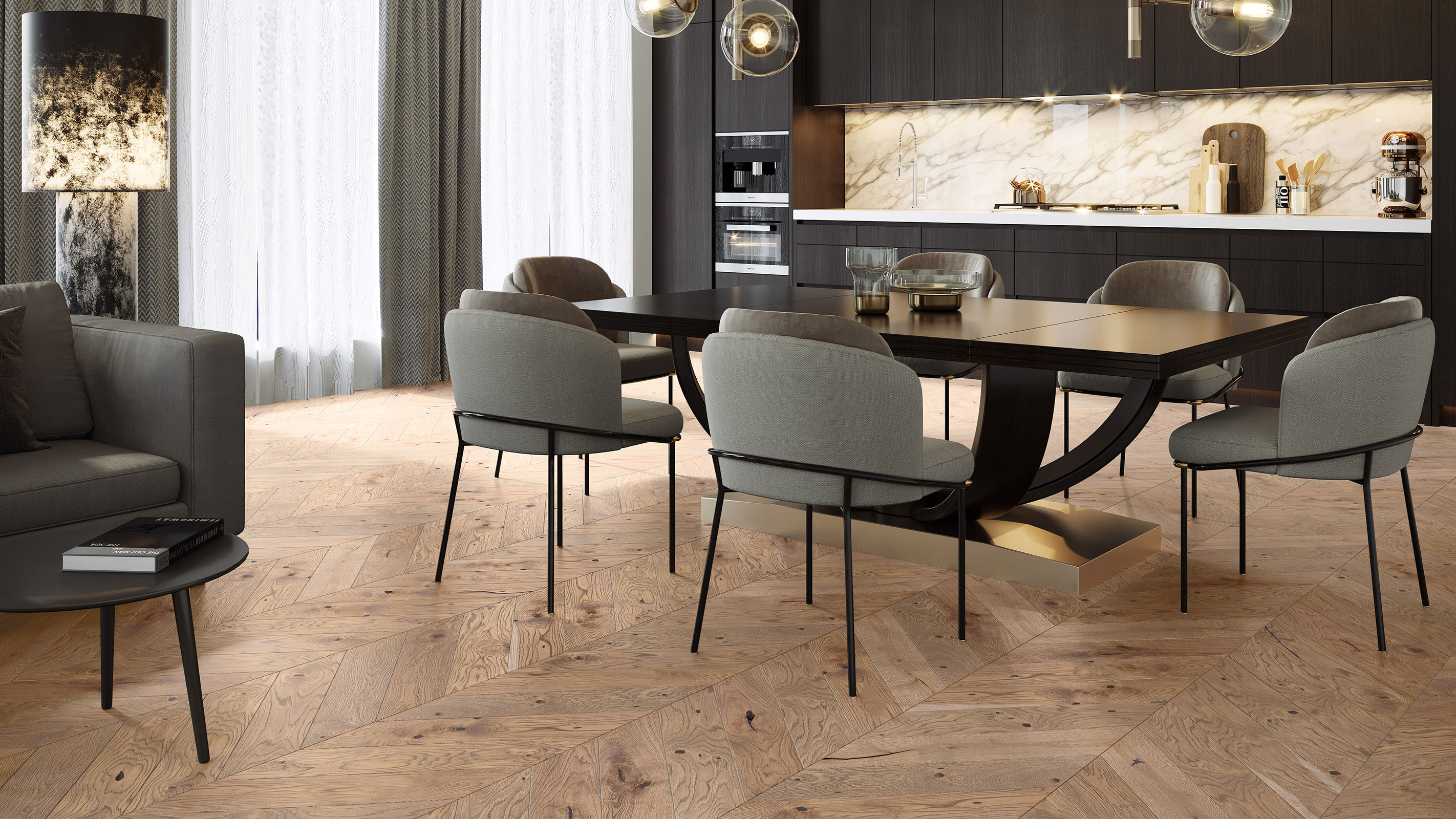
How much does reclaimed wood flooring cost?
Antique reclaimed wood flooring is one of the most expensive options here — it can easily come with price tags of up to £350/m² and beyond. That said, unrestored reclaimed boards can be picked up for around £40/m2.
Are wood flooring look-a-likes a cheaper option?
Lower costs are just one of the reasons many people decide to opt for wood flooring alternatives — they can also be really practical and easy to lay on a DIY basis too. From types of vinyl flooring, to laminate, these look-a-like products can be really convincing.
“Luxury Vinyl Tiles, also known as Click Vinyl Flooring or LVT, are renowned for the ability to imitate high-end flooring designs to an impeccable standard," says Craig Smith. "Built with multiple vinyl layers, this robust flooring not only looks amazing but also boasts excellent water-resistance."
That said, while LVT is a highly practical option, it will not always be cheaper than wooden flooring, with prices from £35 - £65/m²+ to be expected.
“Laminate is another great option for cheap flooring and is popular for being practical, budget- friendly and extremely versatile in design. Thanks to its hyper-realistic print layer and authentic feeling bevels and grains, laminate can replicate the look of real wood flooring or popular tiled designs to exacting detail. At a fraction of the cost of hard wood, laminate is also cheaper and quicker to install, making it a great choice for those looking to keep up with the latest trends on a tight budget."
Laminate flooring costs from £6/m², up to £50/m² for high quality varieties.
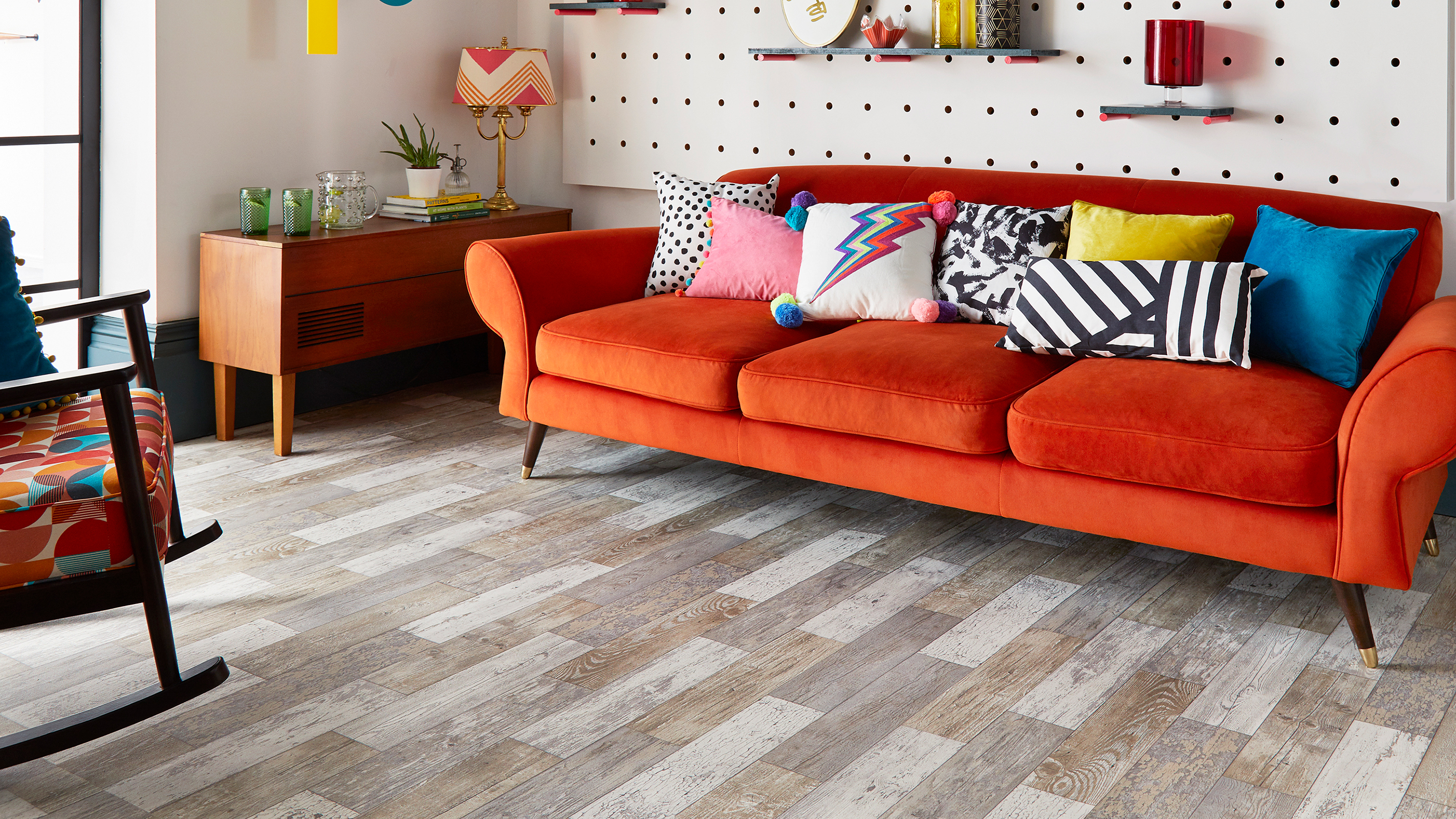
What should I pay for underlay?
Don't forget to budget for extras such as underlay. Underlay is more commonly used with types of flooring that are laid as floating floors, such as engineered wood flooring, as opposed to solid floors that are fixed directly to the subfloor.
Underlay varies in price (and quality) but can be purchased for as little as £1/m². However, if you want good soundproofing or are after an underlay with a low tog value (good for those with underfloor heating who want to allow heat through) you will need to pay a little more — expect prices between £2.50/m² - £9/m².
What does wood flooring installation cost?
Buying a wood floor is not the only cost to consider — you will also need to factor in having it fitted.
Some people choose to fit their wooden floor on a DIY basis which obviously saves on installation costs — bear in mind that getting to grips with how to fit an engineered wood floor is usually considerably simpler than laying a solid wooden floor.
Should you decide to call in the professionals, you can expect to be faced with costs starting from £20/m² for the installation of both solid and engineered boards. Parquet flooring is trickier to install and therefore starting prices of £30/m² - £35/m² are common.
These installation costs are not likely to include extras such as floor levelling or door trimming. Door trimming costs approximately £20 per door.
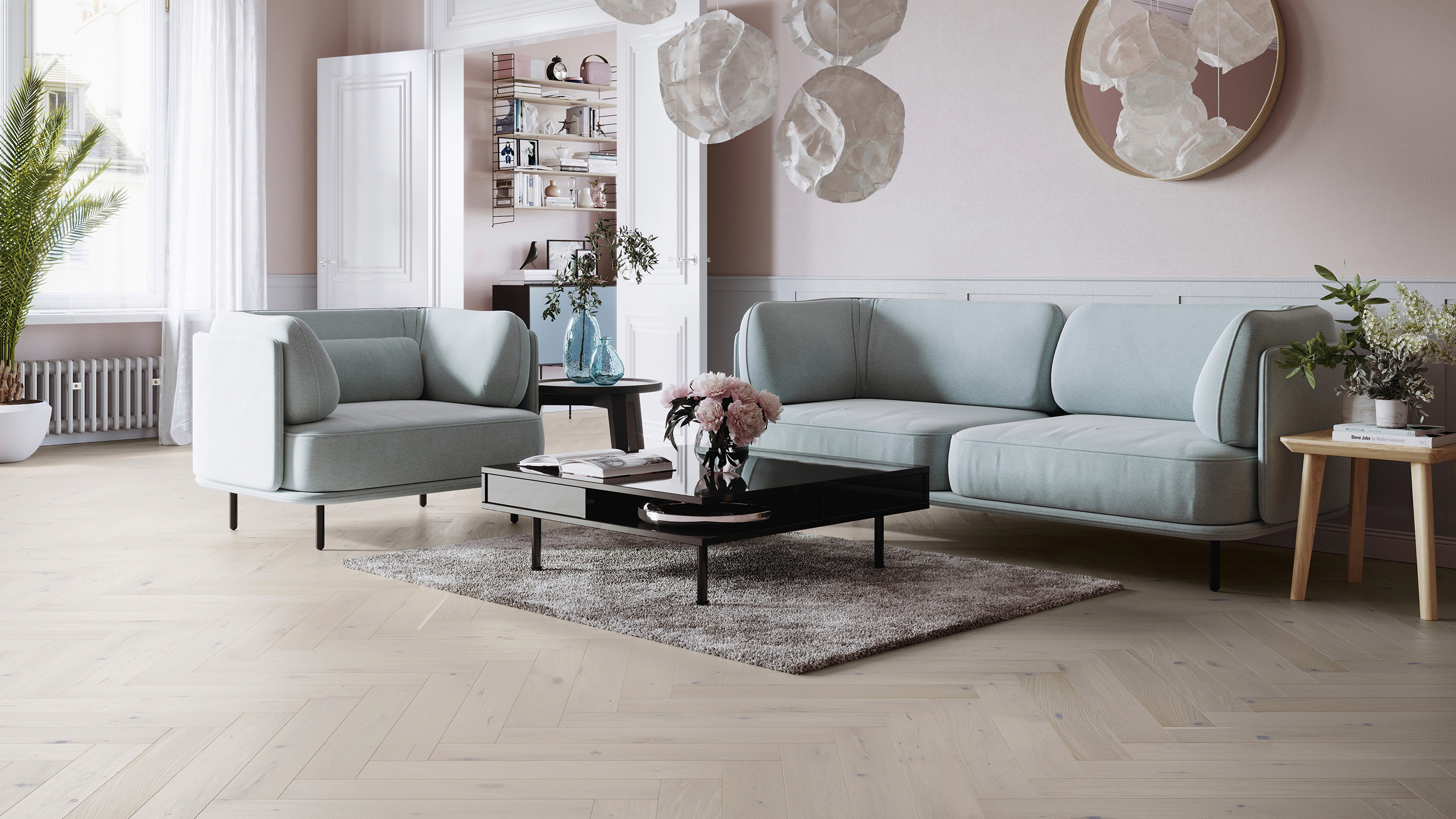
How much does floor sanding cost?
If you have an original wooden floor that could do with a little love to bring it back to its best, you will probably need to have it sanded and refinished.
Sanding floorboards is a job which many DIYers try their hand at and is a great way to get your floorboards looking shipshape once again.
Expect to pay around £34 per day to hire a floor sander and remember to factor in the cost of an edge sander too, which you are also likely to need, plus extra sanding sheets. HSS Hire charge £51.19 per day for their Floor and Edge Sander Hire Pack.
If you were to call in the professionals to restore your floor, you are likely to be looking at costs of around £20/m² for sanding and from £25/m² for sanding and refinishing.
Get the Homebuilding & Renovating Newsletter
Bring your dream home to life with expert advice, how to guides and design inspiration. Sign up for our newsletter and get two free tickets to a Homebuilding & Renovating Show near you.
Natasha was Homebuilding & Renovating’s Associate Content Editor and was a member of the Homebuilding team for over two decades. In her role on Homebuilding & Renovating she imparted her knowledge on a wide range of renovation topics, from window condensation to renovating bathrooms, to removing walls and adding an extension. She continues to write for Homebuilding on these topics, and more. An experienced journalist and renovation expert, she also writes for a number of other homes titles, including Homes & Gardens and Ideal Homes. Over the years Natasha has renovated and carried out a side extension to a Victorian terrace. She is currently living in the rural Edwardian cottage she renovated and extended on a largely DIY basis, living on site for the duration of the project.

